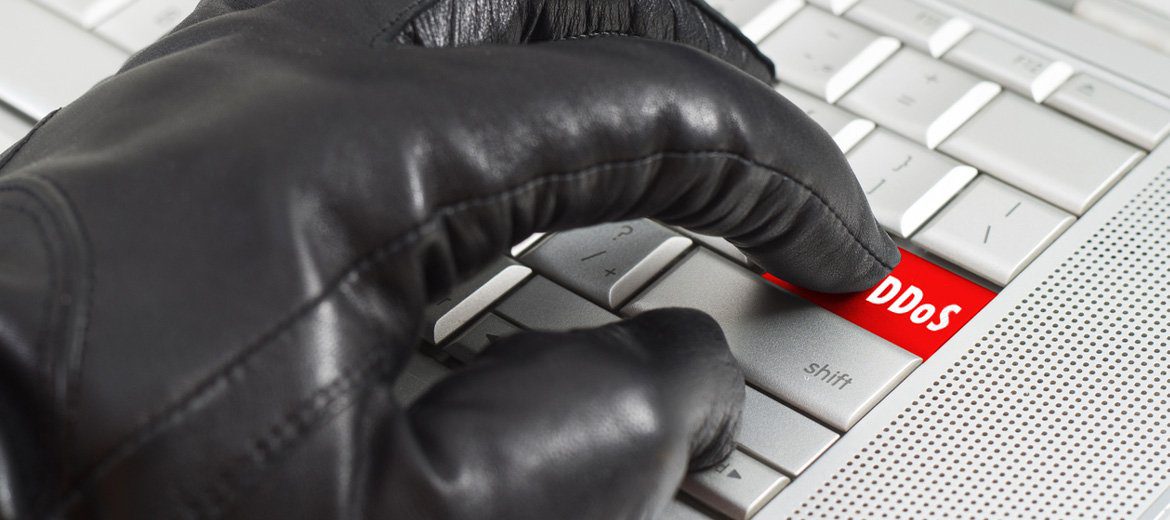Blogs
Home / Blog


Your business is flourishing, and your website is converting your visitors into paying customers. To ensure that this flow continues, you have installed the latest malware protection software and firewalls. Suddenly, you notice some suspicious activity on your website and your website starts to behave awkwardly. You realize that malware protection software and firewalls have its own limitations and they cannot protect against zero-day attacks.
With hackers staying one step ahead of the security professionals and companies, they can find and exploit vulnerabilities in your website security system. So, what can a business owner do in such a situation? They should keep an eye out for the warning signs to react quickly and prevent damage. Here are seven warning signs that you should look out for and raise the red flag as soon as any one of them pops up.
Can you access your own website? No, then this might be due to a DDoS attack. Hackers send tons of traffic at a given time and exhaust the bandwidth and server resources, so it cannot cater to other requests. That is where implementing DDoS protection can help you shrug off such attacks.
Try accessing your website from Google Chrome and if it gives a warning sign that your website is hacked then you should take this warning seriously as this warning message pops up when Google safe browsing blacklists your website. You will also find the same warning message when you try to access your website from other browsers as well. Here is what Google warning message looks like.
One of the first things you will notice in case your website is hacked is that your login credentials might not work. If you are typing in your login credentials right and hitting enter but still getting the screen showing the message password is invalid then, there are bright chances that your password has been changed by hackers and your website has been hacked. Try again after 10 minutes to check whether this might be due to a technical issue but if the same issue persists then you might be in trouble. To prevent this scenario, try changing your passwords frequently and use two-factor authentications.
Open the source code of your website and look for suspicious JavaScript code. If you find it, remove it as soon as possible because this strange looking JavaScript code is used by hackers to steal sensitive information such as credit card details and passwords and could redirect to malicious ads, pop-ups, and websites. If your website is built using Magento, then look out for malicious JQuery code because security professionals have found the presence of malicious JQuery code in hacked Magento based websites.
Did you know that a business is hit with ransomware attack every 40 seconds? According to the statistics, the number of ransomware variants grew by more than 4 times in 2017 as compared to 2016. The global ransomware damage has exceeded $5 billion marks in 2017. Moreover, the average ransom has gone up from $294 in 2015 to $1077 in 2016. All these stats show that ransomware is rampant these days.
If your business must be on a receiving end of one, you have a couple of options. Take regular backups of your data so you can restore it without paying a hefty sum of money. Ask folks in IT department to recover files, they might achieve some success in it. If they fail at it, you should pay the ransom and get access to your data. Although, security professionals will advise you against it, you don’t have any other option.
Are you getting a pop-up, spam advertisements from a website that does not generate it usually? If yes, then hackers might have used cross-site scripting or injected a malicious code into your website to bypass its security. You will also receive an email from Google safe browsing alerting you about any social engineering activities taking place on your website. Are you getting unexpected error messages? If yes, then you should start looking for error logs and identify unfamiliar errors. Run a malicious scan and verify the authenticity of the code.
Have you checked your mobile account lately? Could you find some money missing from it? Is it empty? If yes, then your bank account details or credit card information might be leaked. Hackers don’t launch a cyber attack without a reason. They have a purpose and it could be financial as well. Although most of the financial institutions have strict security checks in place and might even offer you some compensation, you need to go the extra mile to ensure that you don’t end up with an empty bank account.
Start off by turning on the transaction alert service which sends you an SMS or email whenever a transaction is performed from your account. Hackers are smart enough and would change the contact information before conducting a transaction, but you can overcome that by turning on alerts for any changes in contact information. You can also set transaction limits.
Is your website too slow to load and browse suddenly? If yes, then this might be caused due to a malware that is hogging your server resources. How long is it taking your website to load? If it used to load in 3-4 seconds and now it is taking more than 10 seconds to load then, this is an indication that something is wrong.
Hackers usually target login, sign up or payment pages but these attacks can go beyond that. Remember when a hosting company sees malicious code affecting your website, it will either fully disable your website from its server or limit resource allocation for your website, which might make your website inaccessible or bring your website down to a crawl.
Which website warning signs have you seen on your website? Feel free to share your experience with us in the comments section below.
Enter your email to receive the latest news, updates and offers from HostNoc.
